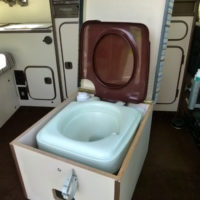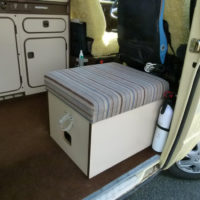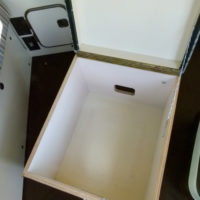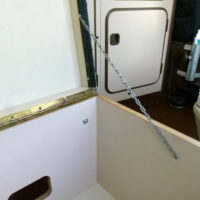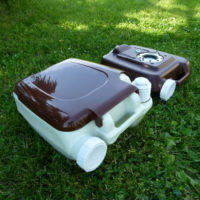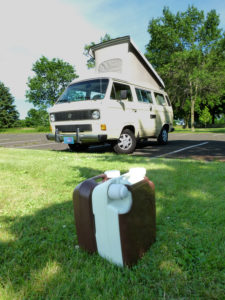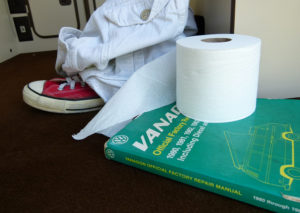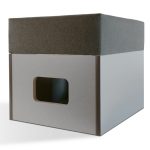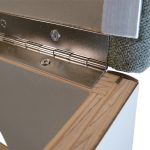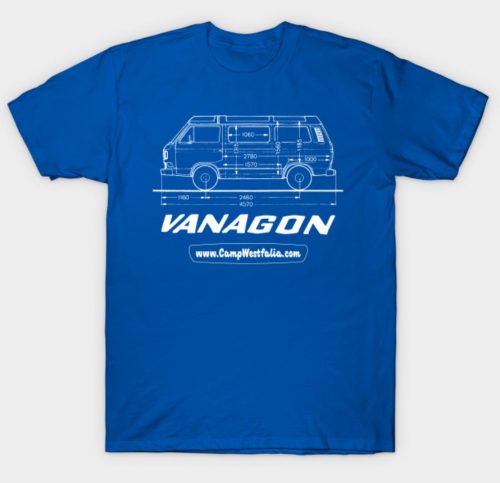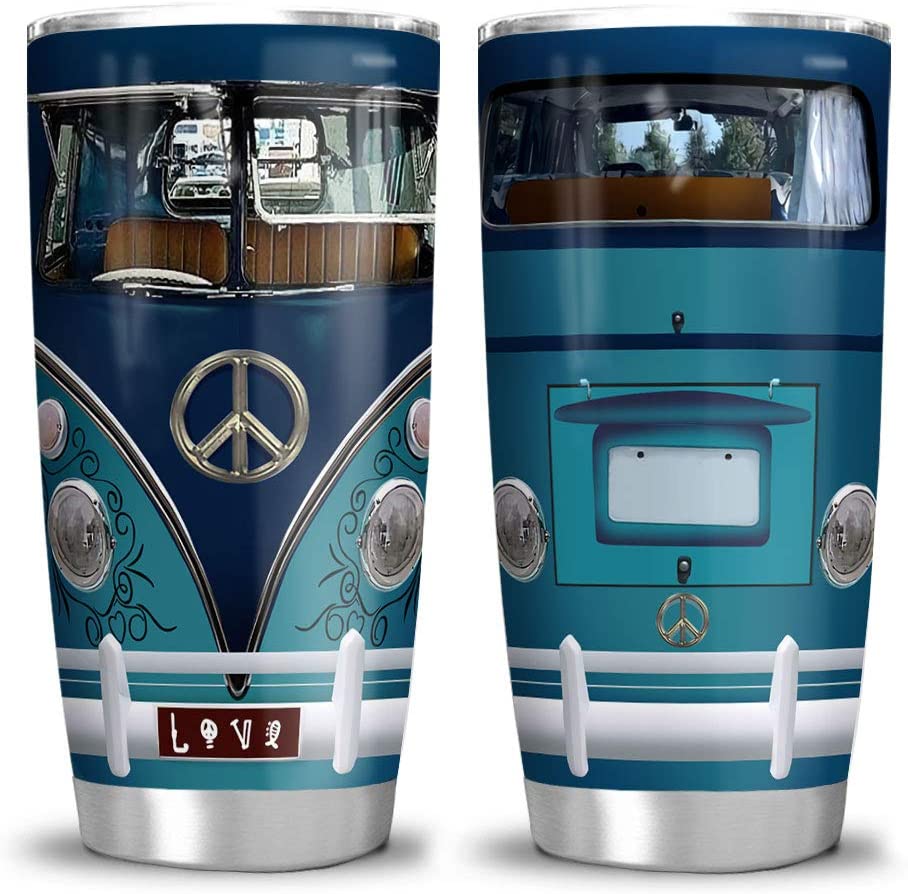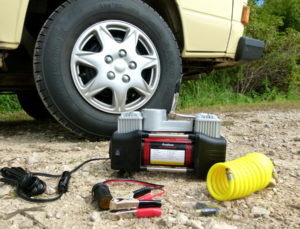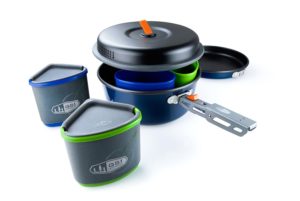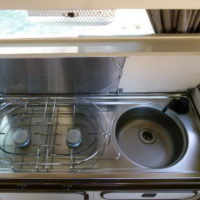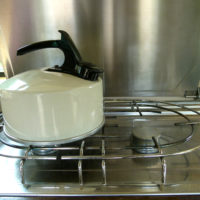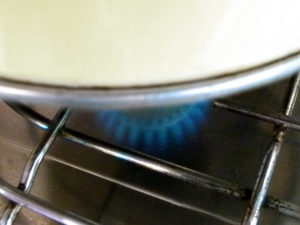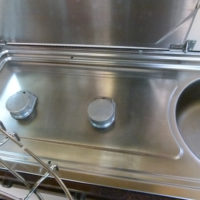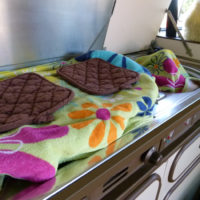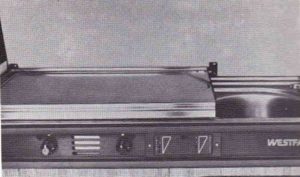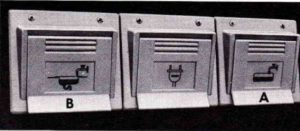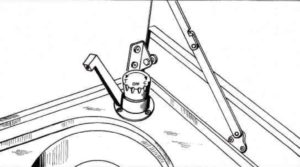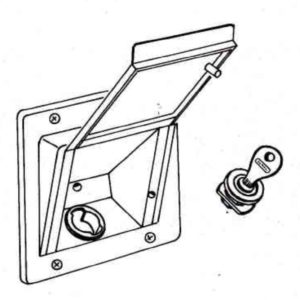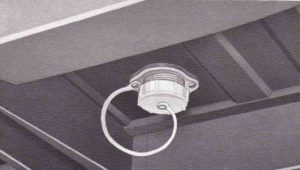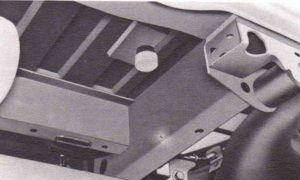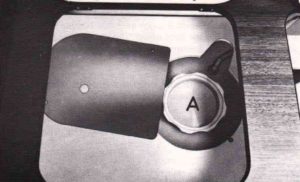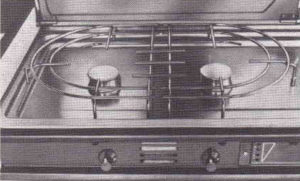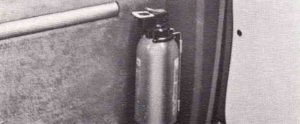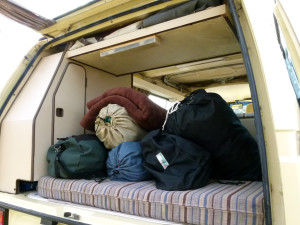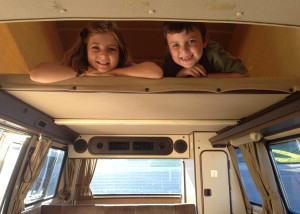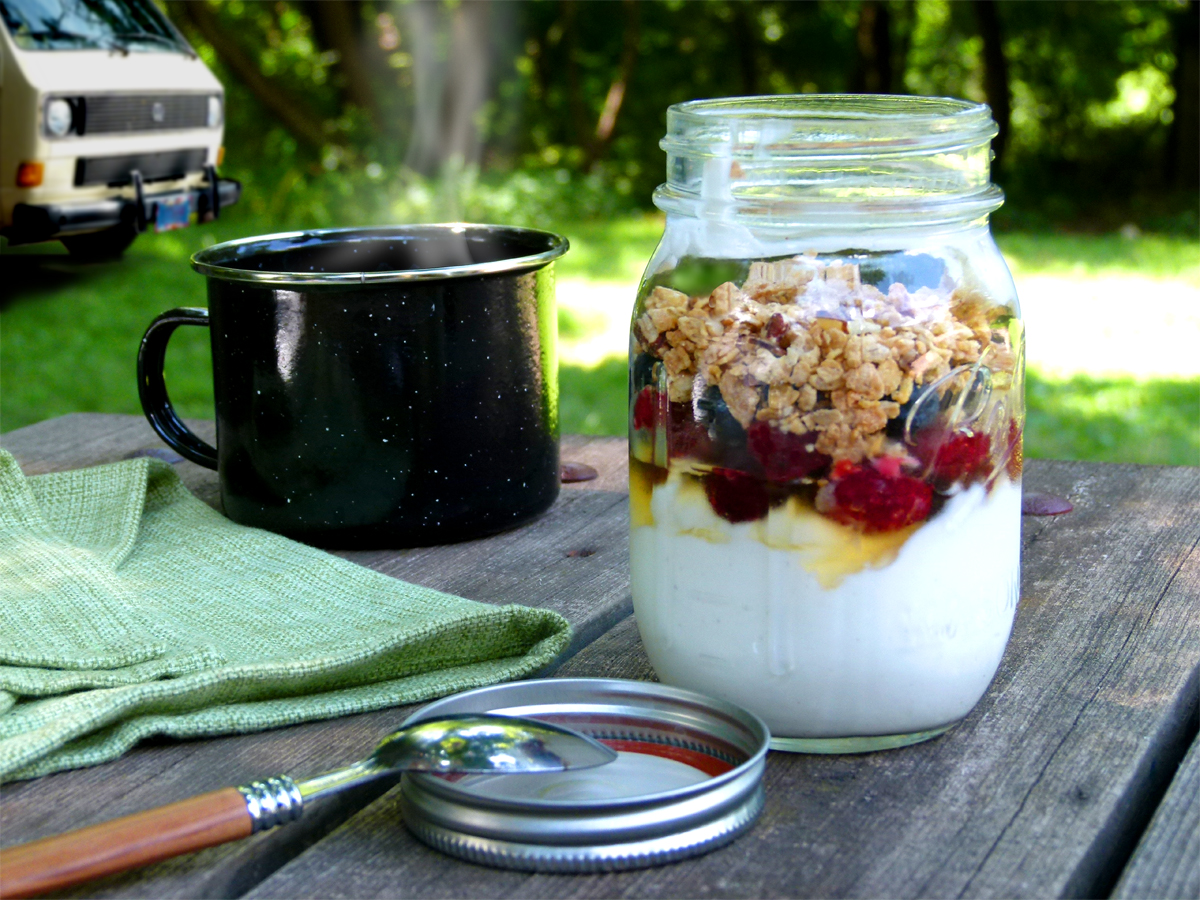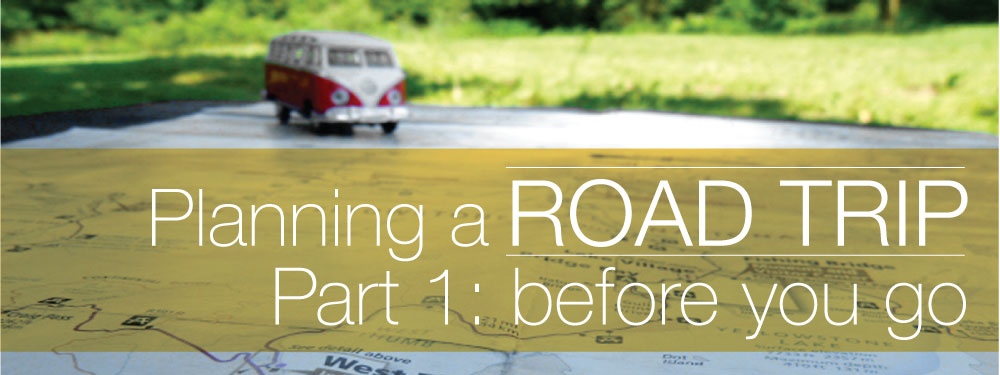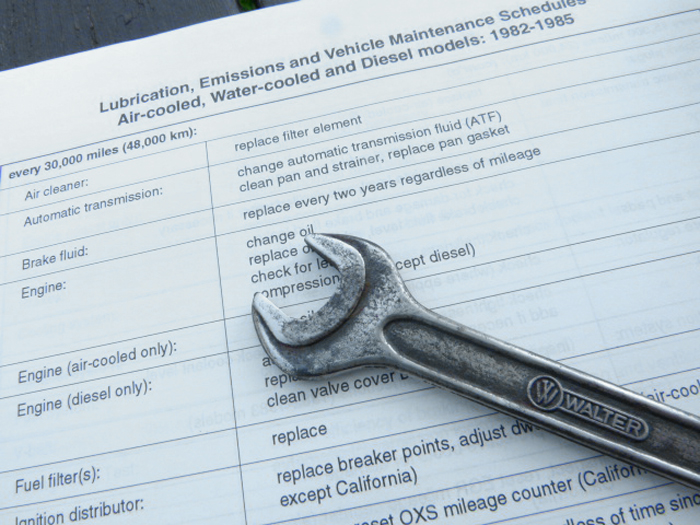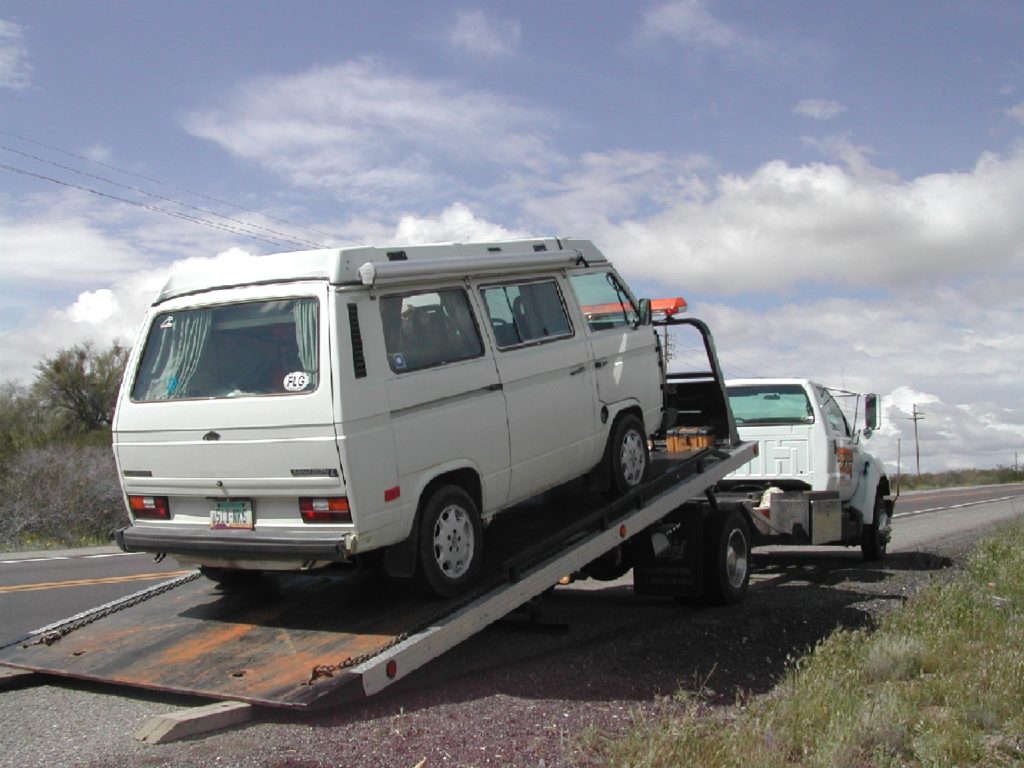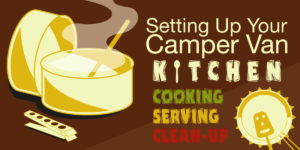NOTE: the following text and photos are excerpted from the 1983 Camper “Supplement to Volkswagen Vanagon Owner’s Manual.” For more info on operating the fridge see, “Using the Westfalia Refrigerator.”
Downloads
1980-1985 Vanagon Westfalia Campers: “Supplement to Volkswagen Vanagon Owner’s Manual”
1986-1990 Vanagon Westfalia Campers: “Supplement to Volkswagen Vanagon Owner’s Manual”
Refrigeration
The controls for gas/electric refrigeration are arranged along the top edge of the refrigerator. They are accessible by opening the refrigerator door.
A: Pump Knob
B: Safety Valve Button
C: Thermostat Control Knob
D: Voltage Selector Switch
E: Gas Valve Knob
F: Flame Indicator Light
Startup Procedure for Propane Operation:
- Turn the gas valve on propane tank to ON.
- Move the Voltage Selector Switch (D) to GAS (center position).
- Turn Gas Valve Knob (E) to ON.
- Turn Thermostat Control Knob (C) clockwise to MAX.
- Pull Pump Knob (A) and pump in and out at least 15 to 20 times.
- Press and hold Safety Valve Button (B), at the same time push Pump Knob (A) in completely until an audible click is heard.
- Continue to hold Safety Valve Button (B) until the Flame Indicator Light (F) in the sink cabinet control panel comes on and remains on. This should require about 15-30 seconds.
- If the Flame Indicator Light (F) does not come on, or if it flickers on but goes out again, the pilot light has failed to ignite to a steady burn. This might happen if the refrigerator has not been used for some time, or if the outside temperature is low. Repeat steps 5-7.
- After a few minutes, check the Flame Indicator Light (F) again, to assure yourself that the pilot light is still burning. The pilot light flame can also be observed through the sight glass in the lower left hand corner of the rear wall inside the refrigerator.
- Should the pilot light snuff out unexpectedly, the Flame Indicator Light (F) will also go out, and the thermocouple safety valve will automatically shut off the gas flow.
- Temperature inside the refrigerator can be regulated with Thermostat Control Knob (C). The center position will usually maintain sufficient cooling. In hot weather, or when more cooling is required, turn the knob toward MAX.
To discontinue gas operation:
- Turn Pump Knob (A) to OFF.
- Turn Gas Valve Knob (E) to OFF.
- Turn Thermostat Control Knob (C) to GAS MIN.
To assure yourself troublefree gas refrigeration at altitudes above 6500 feet or 2000 meters, it is necessary to install a smaller gas burner jet. Therefore, if you use your camper predominantly at high altitudes, the no. 24 jet installed in the burner tube should be replaced by a no. 22 jet. Contact the Dometic Refrigerator Service center in your area for this service.
NOTE: When the liquid propane tank is refilled, air will remain in the gas line. Before using gas refrigeration, we recommend bleeding the system by lighting the burners of the gas stove. Let burners burn for about one minute. This will help air escape more rapidly.
Procedure for Electric Operation:
- Move Voltage Selector Switch (D) to AC 120 V.
- Make sure Gas Valve Knob (E) is in OFF position.
- Turn Thermostat Control Knob (C) clockwise to MAX. When the refrigerator interior is sufficiently cold, turn Knob (C) from MAX to an intermediate setting.
The 12 Volt power supply from the vehicle battery can be used only when the engine is running and the Voltage Selector Switch (D) is set on DC 12 V.
The 12 V circuit is not thermostatically controlled.
To Discontinue Electric Operation:
- Move Voltage Selector Switch (D) to GAS (center position).
- Turn Thermostat Control Knob (C) to GAS MIN.
Defrosting the Refrigerator
Keep an eye on the ice formation on the evaporator core. Too much ice build-up reduces cooling efficiency. We recommend frequent defrosting. Never let the ice thicken more than 1/8” (3-4 mm).
Make sure that Gas Valve Knob (E) is in OFF position, and that Thermostat Control Knob (C) is in the GAS MIN position.
Empty the refrigerator, leave the door open and let the ice melt into the catch basin below. Pull the basin out to empty the water and dry off before reinstalling.
Cleaning the Refrigerator
Clean the refrigerator interior with a solution of lukewarm water and baking soda.
To keep the door seal air tight, clean the seal around the door with clear water only. Chemical additives, oil and grease much to come into contact with the seal.
Ventilation
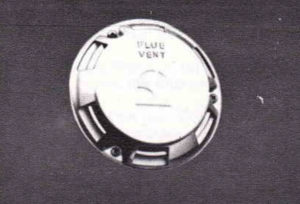 Keep all vent openings clean and unobstructed to assure efficient cooling. Vent openings are located below the refrigerator door, behind the heart shield of the gas range, in the left sidewall of the sink cabinet, and in the left outside panel of the vehicle.
Keep all vent openings clean and unobstructed to assure efficient cooling. Vent openings are located below the refrigerator door, behind the heart shield of the gas range, in the left sidewall of the sink cabinet, and in the left outside panel of the vehicle.
Inspect the propane tank and lines periodically for tightness and leaks. Use soapy water to test for leaks — NOT MATCHES.
Start refrigerator several hours before storing food. Precool or freeze food items at home before loading your Camper refrigerator.
Leave spaces between food and drink items for the necessary air circulation. Use unbreakable plastic containers and bottles, and seal them tightly to prevent spilling.
Condensation
 The FLUE VENT must be kept uncovered at all times.
The FLUE VENT must be kept uncovered at all times.
Only when you wash the Camper, or while taking the vehicle through an automatic car wash, should the Flue Vent be covered.
To drain accumulated water due to normal condensation, open the screw on the condensation drain pipe (arrow).
When the refrigerator is operating, be sure to park on level ground to maintain efficient cooling. If the vehicle remains stationary for any length time on gradients exceeding +/-8˚, the cooling output will be considerably reduced. Should level ground parking be unavailable, it is best to discontinue operation to prevent overheating of the core which can lead to permanent damage of the refrigerator.









